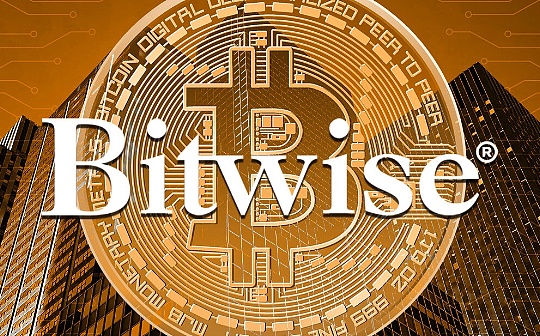Analyzing Moca Network: Building a Digital Identity Infrastructure for the Open Internet

Reprinted from panewslab
01/15/2025·22days agoSummary of key points
-
Fragmented digital identity puts users and businesses in an efficiency dilemma. To solve this problem, establishing an open and user-centric infrastructure has become particularly critical.
-
The MOCA 3.0 vision recently released by Moca Network is aimed at this challenge. This plan is committed to building an open digital identity infrastructure, putting user needs at the core, and providing a new way of thinking about solving the fragmentation of digital identity.
-
Moca Network is rapidly advancing its growth through Animoca Brands' vast ecosystem resources, including more than 540 portfolio companies. Its strategic cooperation with SK Planet has shown remarkable results, fully proving the huge potential of building a complete ecosystem based on digital identity.
1. Fragmentation of digital identity: a missed opportunity
The fragmentation of digital identity results in significant missed opportunities for both users and businesses. It is difficult for enterprises to accurately identify high-value users, and the true value of users has not been fully recognized. This disconnect severely limits the value creation space for both parties.
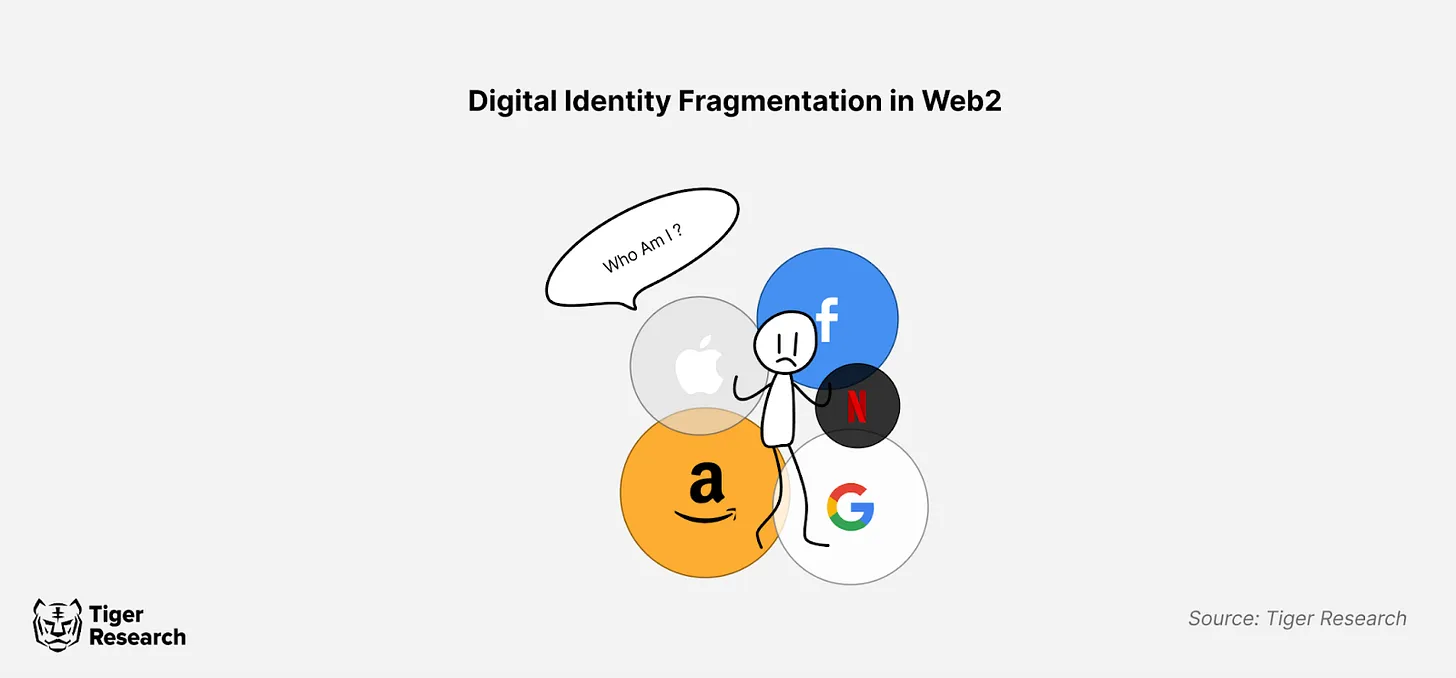
This problem is particularly evident in the area of targeted advertising in the Web2 industry. Enterprises use platforms such as Meta to segment users and carry out promotional activities. However, these ads only rely on limited data from each platform, greatly reducing the breadth and accuracy of targeting. While users interact with multiple platforms, promotions can only be targeted to specific platforms due to their fragmented digital identities. This disconnect prevents businesses and users from realizing the full potential value.

Source: Dune, Tiger Research
The Web3 industry faces more complex challenges. The Web3 project attempts to reward ecosystem contributors through airdrops. However, the process was not smooth. User activities are scattered across Web2 and Web3 platforms, and it is difficult to identify real contributors relying solely on single-chain data. The anonymity and decentralization of Web3 also allow users to easily decide whether to continue using or exit the platform. The case of Starknet is a typical example: an airdrop targeting approximately 1.3 million wallets failed to accurately identify the real contributors due to limited data, ultimately leading to a significant drop in on-chain activity.
2. The root cause of digital identity fragmentation
Digital identity fragmentation is a structural issue affecting the Web2 and Web3 industries. The core problem is that platforms, not users, control digital identities. Technical limitations are also important factors: Each platform uses different technical specifications and data schemas for digital identity, making data sharing and integration extremely challenging. Tech giants such as Alibaba, Tencent and FAANG further exacerbate this fragmentation by keeping user data within their own walls.
This structural problem is not only a loss of opportunity, but also causes substantial inconvenience and distorts the distribution of value. Users had to recreate accounts on each platform, repeatedly building their activity records and profiles. Platforms profit by monopolizing the pooled value of data: Google and Meta make tens of billions of dollars a year from ads that rely on user data, and Reddit makes billions every quarter by selling user data. However, the real owners of the data – the users – are excluded from these business opportunities.
To solve these problems, digital identity must be redefined as user-centric. At the same time, there is a need for an open infrastructure that can operate seamlessly in different environments. Moca Network provides solutions to these challenges.
3. Moca Network: Digital Identity Infrastructure for the Open Internet
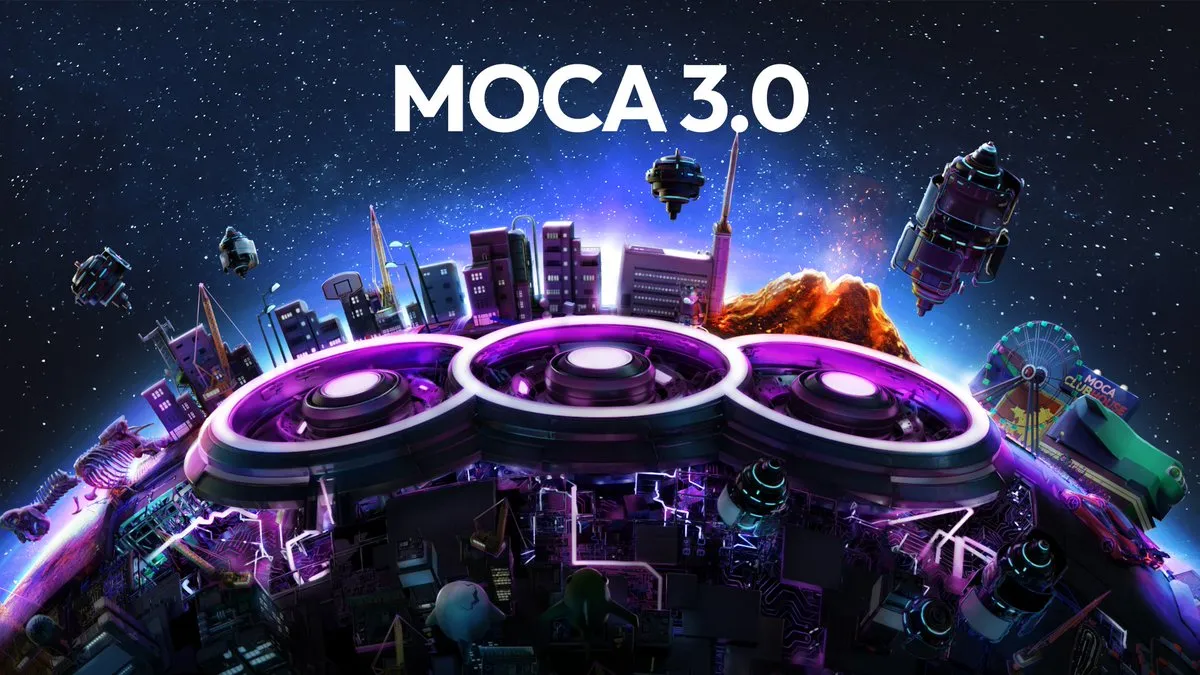
Source: Moca Network
Moca Network’s new MOCA 3.0 is dedicated to building a digital identity infrastructure for the open internet. The initiative addresses the disconnect and fragmentation of current systems and aims to create a unified digital environment that enables seamless collaboration of digital identities. The infrastructure proposed by Moca Network focuses on three core features.
**3.1. AIR Kit: Core infrastructure for unified account, identity and
reputation management**
Moca Network's AIR Kit (Account, Identity, Reputation) is a universal account system. It is blockchain agnostic and works in a variety of environments. The system is highly interoperable, allowing users to easily unify and manage their digital identities.
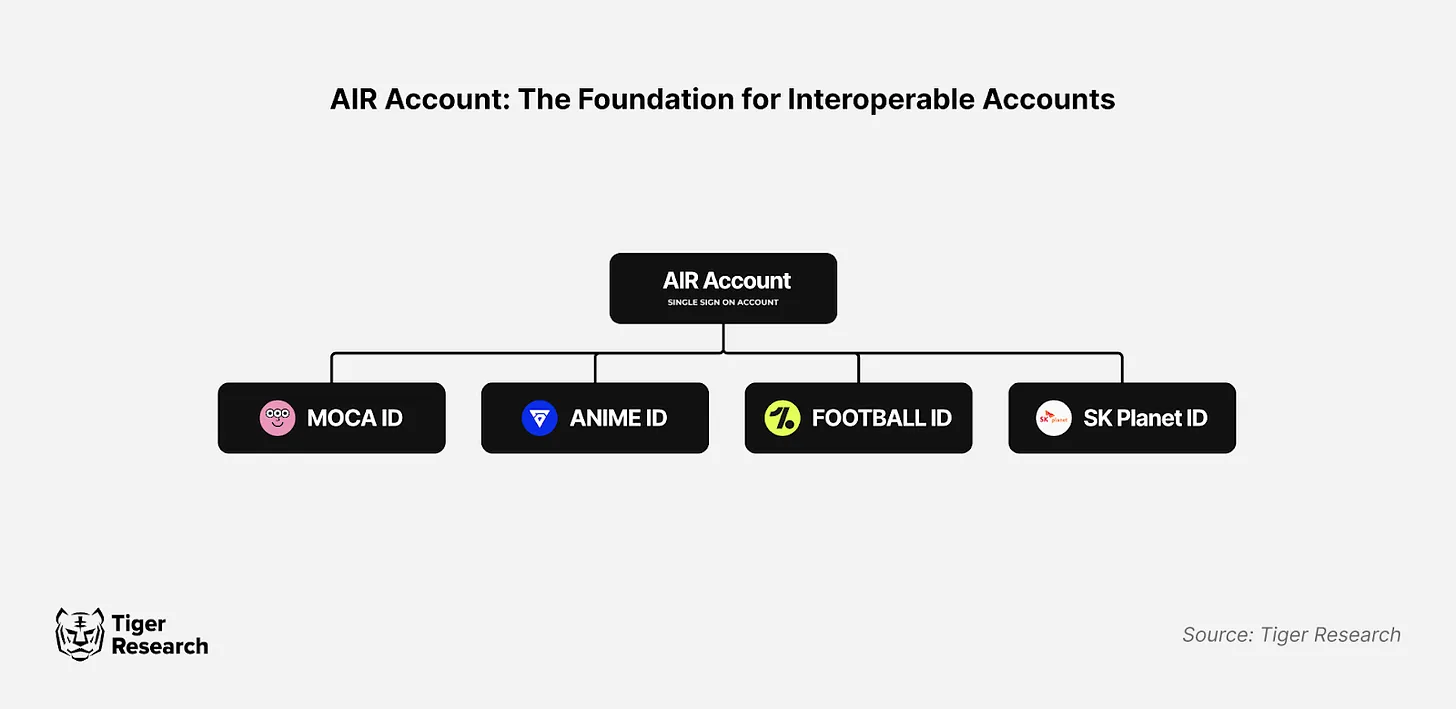
AIR Kit realizes the seamless connection of accounts and identities. Identity ID serves as the interface between users and services, while accounts serve as the hub connecting various identities and activities of users. For example, a MOCA ID on Mocaverse and a FOOTBALL ID on OneFootball are both linked to the same AIR account, while these identities remain separate. With an addressable user base of over 1 billion, Moca Network enables users to participate in multiple ecosystems from a single account.
AIR Kit can be used as an embedded account system to provide a seamless on-chain experience for Web2. This is similar to Telegram’s TON ecosystem and the way Grab embeds the wallet into its app. Service providers can leverage AIR Kit to integrate Web3 accounts into their platforms.
With AIR Kit, users creating a Web3 wallet is as easy as using social login. They can perform on-chain activities without having to manage complex blockchain addresses or private keys. Functions such as gas fee payment and cross-chain transactions further optimize the user experience.
3.2. Credential system: infrastructure for user data sovereignty
In addition to an open and unified account system, Moca Network also introduces a complete voucher system. This system not only provides infrastructure, but also gives users the ability to manage their own data and create value from it. In this way, users can break through the limitations of traditional centralized platforms and achieve true data sovereignty.
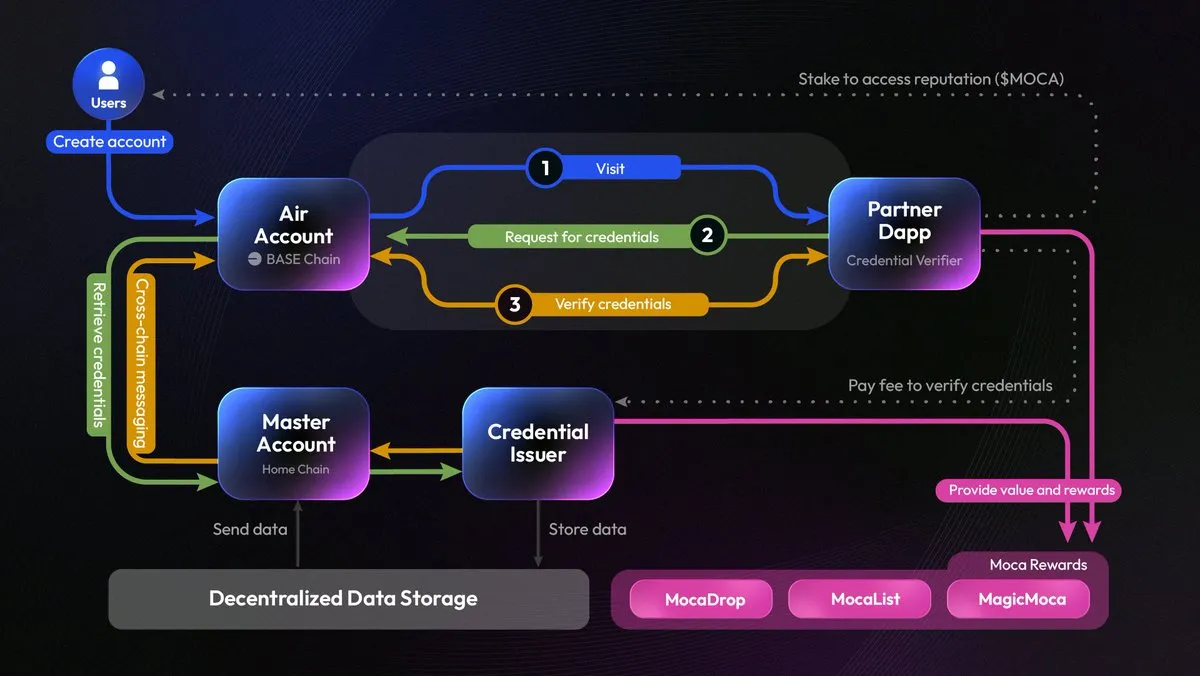
Source: Moca Network
Moca Network supports the issuance, storage and verification of credentials. It securely stores credential data in a decentralized data store, and users can directly set and manage access rights to their credentials. Moca Network vividly describes this feature as a "decentralized user-owned Google Drive."
Moca Network uses tamper-proof technology and zero-knowledge proof (ZKP) to protect data security. It allows users to transfer credentials between different systems through cross-chain messaging protocols such as LayerZero or Wormhole, enabling users to interact directly with smart contracts on any chain securely. This greatly improves users’ ability to derive value from their credentials.
Moca Network also plans to use zkTLS technology to achieve secure verification and use of Web2 data on the chain. By integrating Web2 and Web3 data, Moca Network is building a more comprehensive digital identity system. The system empowers users and effectively bridges the gap between Web2 and Web3, with the ultimate goal of creating a user-centered, inclusive and symbiotic ecosystem.
**3.3. $MOCA: a token system that promotes sustainable development of
the ecosystem**
$MOCA is the core governance token of the Moca Network ecosystem. Partners share in the network effects of the user base and application by staking $MOCA. $MOCA can also be used to pay for credential verification and generation, contributing to the economic growth of the ecosystem. For users, $MOCA is both a payment method and an incentive mechanism, effectively promoting user participation and interaction.
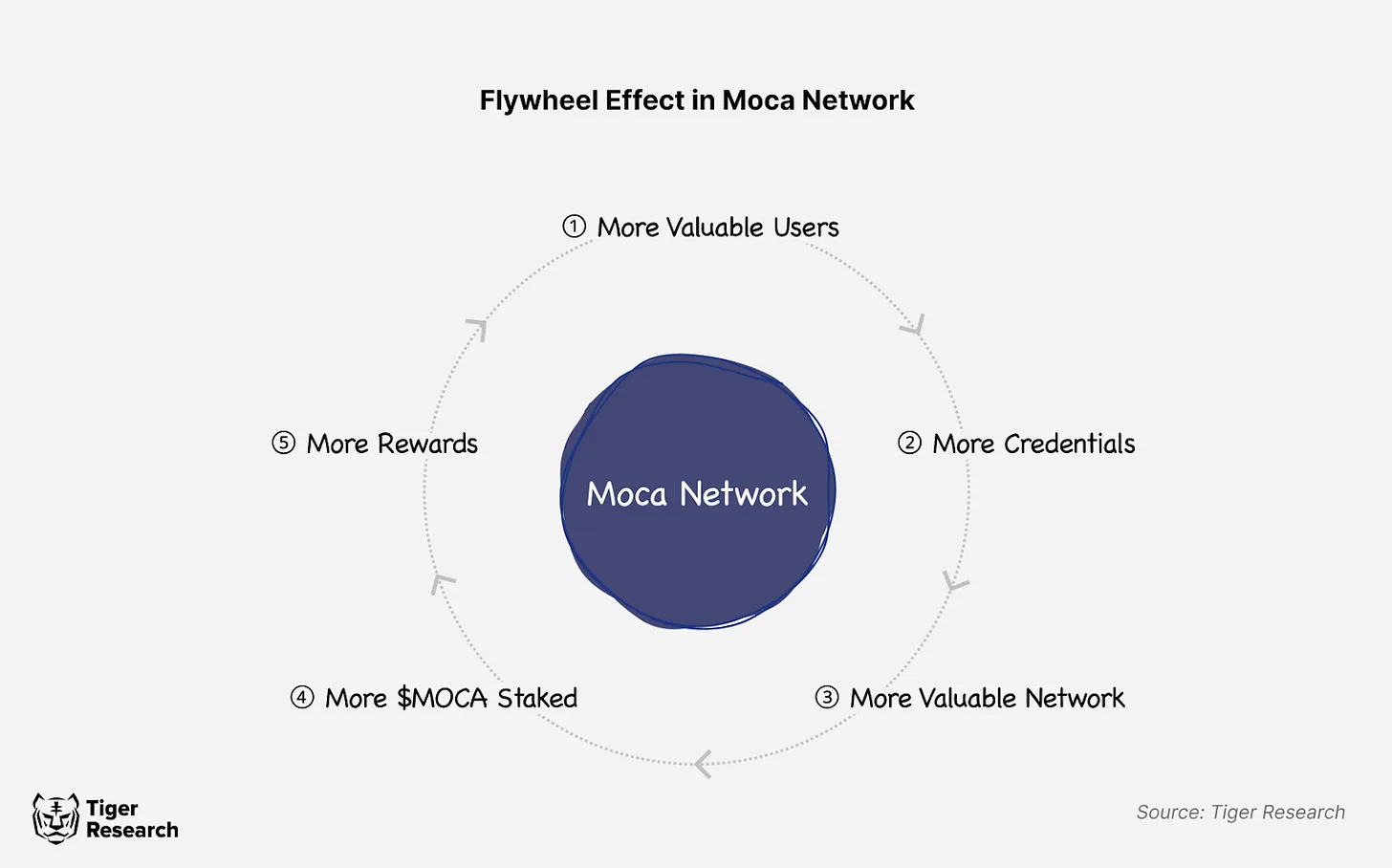
Ecosystem growth is driven by a $MOCA-centric flywheel effect: users are rewarded with $MOCA for activities, which increases engagement, which in turn increases credential verification requests and fee payments from partners. As user activity grows, participants build stronger reputations and receive more rewards, thereby increasing their purchasing power. This virtuous cycle continues to attract more partners to join, further improving user rights and expanding the scale of the ecosystem.

Source: Moca Network
Moca Network offers several rewards programs. These include Moca List, a regulated token issuance platform and Moca Drop, a staking rewards program operated in partnership with Coinlist. Moca Network has also partnered with Magic Eden to create Magic Moca, an NFT issuance platform. Through Moca Drop, users can participate in partner events and airdrops. Users with larger stakes receive higher priority.
In addition to Moca Network's existing reward programs, partners can create their own reward programs using Moca's infrastructure, thus diversifying rewards.
4. Moca Network in action: establishing partnership with SK Planet
Moca Network's partnership with SK Planet shows that digital identity infrastructure is being put into practice. SK Planet has adopted Moca Network’s AIR Kit to connect the OK Cashbag mileage platform and Syrup reward platform to the Web3 ecosystem. The company is also exploring using $MOCA for rewards. This enables users to use their existing points and miles in more ways and gain access to multiple cross-platform benefits.

Source: Moca Network
When users join via an account, they can purchase coffee vouchers and earn OKB (OK Cashbag) points and $MOCA. The $MOCA earned is stored in their account and they can spend it on platforms like the Syrup app or with OKB merchant partners. In the future, users will even be able to use the same account for cross-border shopping, such as in Japan or other countries. Based on user credentials and achievements, merchant partners can verify customer information and provide corresponding rewards through seamless services.
This collaboration benefits everyone involved. AIR Kit instantly converts points, vouchers, and tokens into programmable assets. Users gain more value through this process. Businesses using verified credentials can more effectively target valuable customers. The platform improves user experience and expands the ecosystem by providing seamless operations and benefits.
5. Accelerate the ecosystem with Animoca Brands
The Web3 industry continues its efforts to build digital identity infrastructure. Projects such as POAP and EAS demonstrate effective ways to verify user identity and activity.
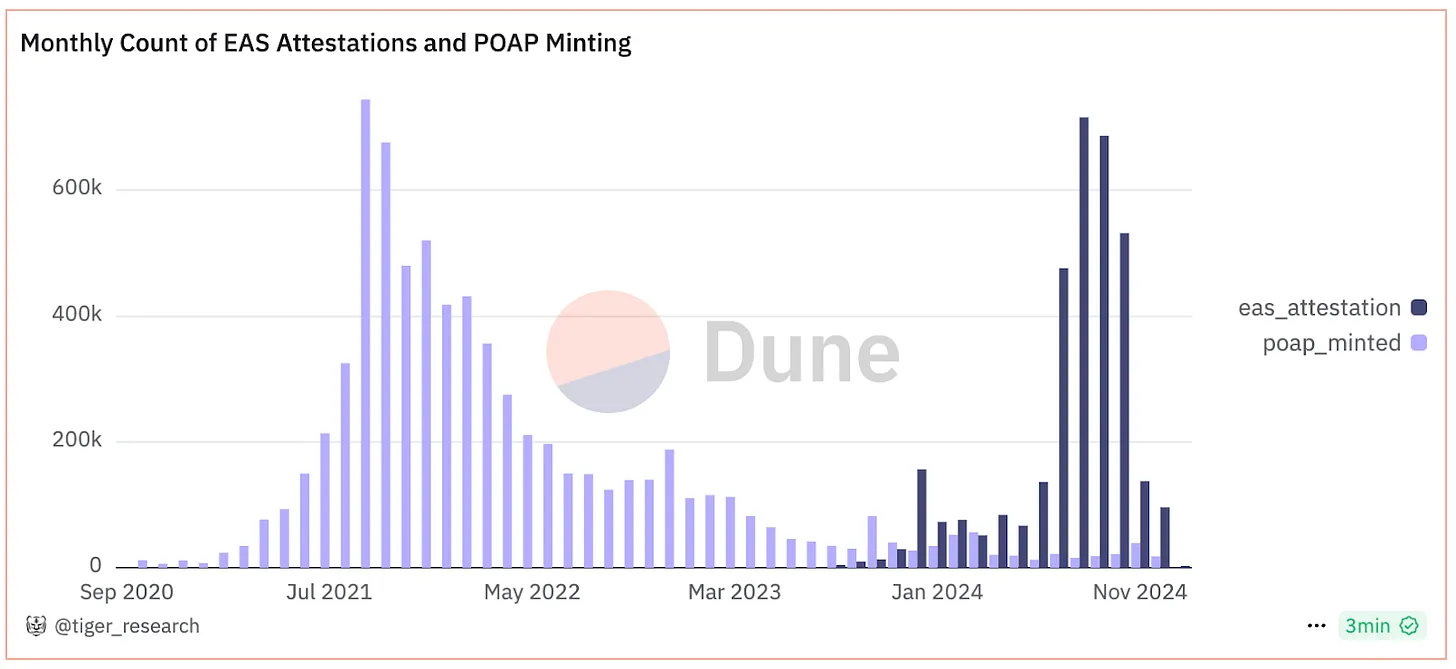
Source: Dune, Tiger Research
However, both projects faced ecosystem building challenges in their early stages. Their usage has been declining over time. The issue is not just one of technology maturity. The success of identity infrastructure requires the creation of an ecosystem supported by powerful network effects.
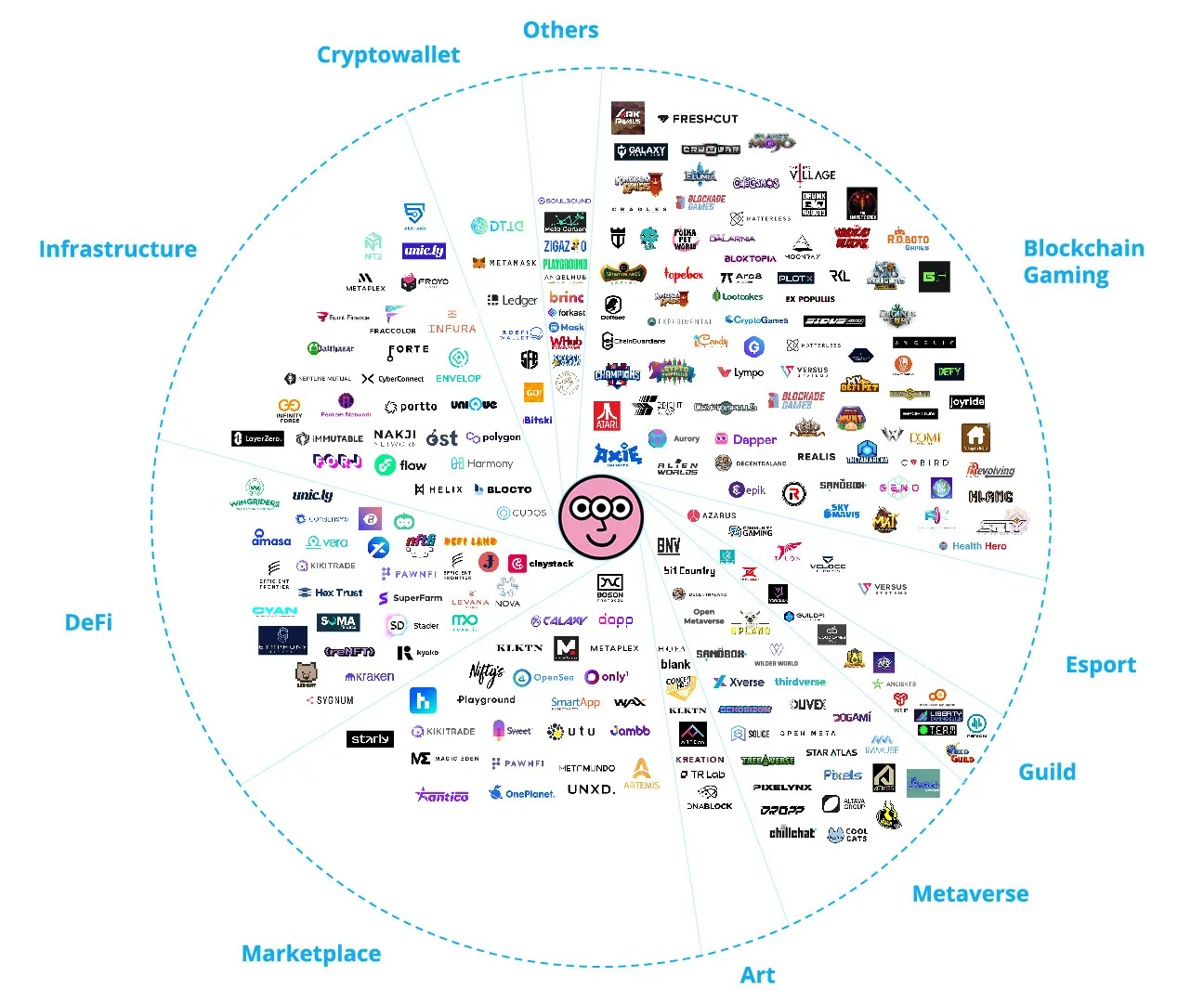
Source: Moca Network
To address these limitations, Moca Network strategically leverages Animoca Brands' existing ecosystem of more than 540 companies. This extensive network will help accelerate the development of Moca Network's emerging ecosystem.
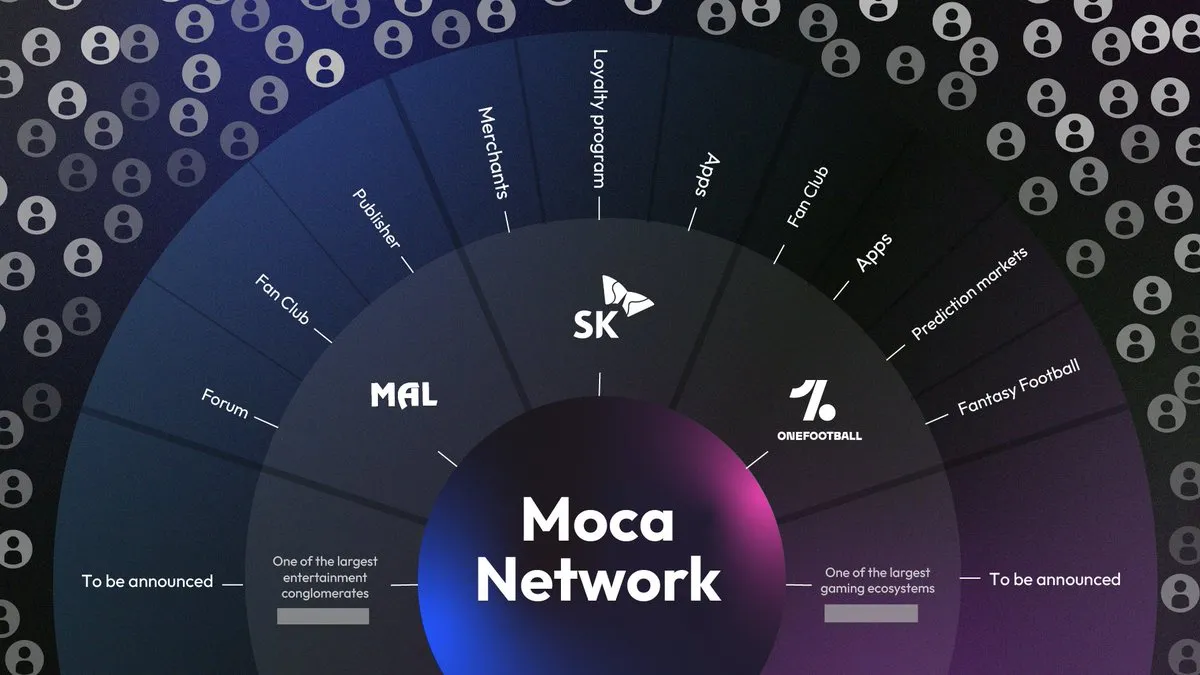
Source: Moca Network
Moca Network's total potential user base is approximately 1 billion+. This number reflects the extensive user network of Animoca’s key partners, including Telegram’s TON (900 million), MyAnimeList (18 million), football platform OneFootball (200 million), Animoca Ecosystem (700 million) and SK Planet (28 million) ). These partners are involved in publishing digital identities through AIR Kit and integrating with the Moca Network ecosystem. In particular, the TON ecosystem will play a key role in accelerating its expansion by issuing digital identities and integrating with Moca Network through Air Kit.
Animoca's global expansion further enhances the possibilities of the Moca Network. The company has formed a joint venture with South Korea's CUBE Entertainment. It has also entered the Japanese market through Animoca Brands Japan and partnered with NEOM City in Saudi Arabia . These initiatives have laid a solid foundation for building a global integrated ecosystem.
6. The future of Moca Network: from digital identity to reputation
economy
Moca Network plans to introduce a new model called a “reputation economy” that does more than just verify identity. It uses credentials to measure user reputation and applies them to various services. Moca Network's partners will create reputation scores based on Web2 and Web3 data, creating new value and opportunities for users.
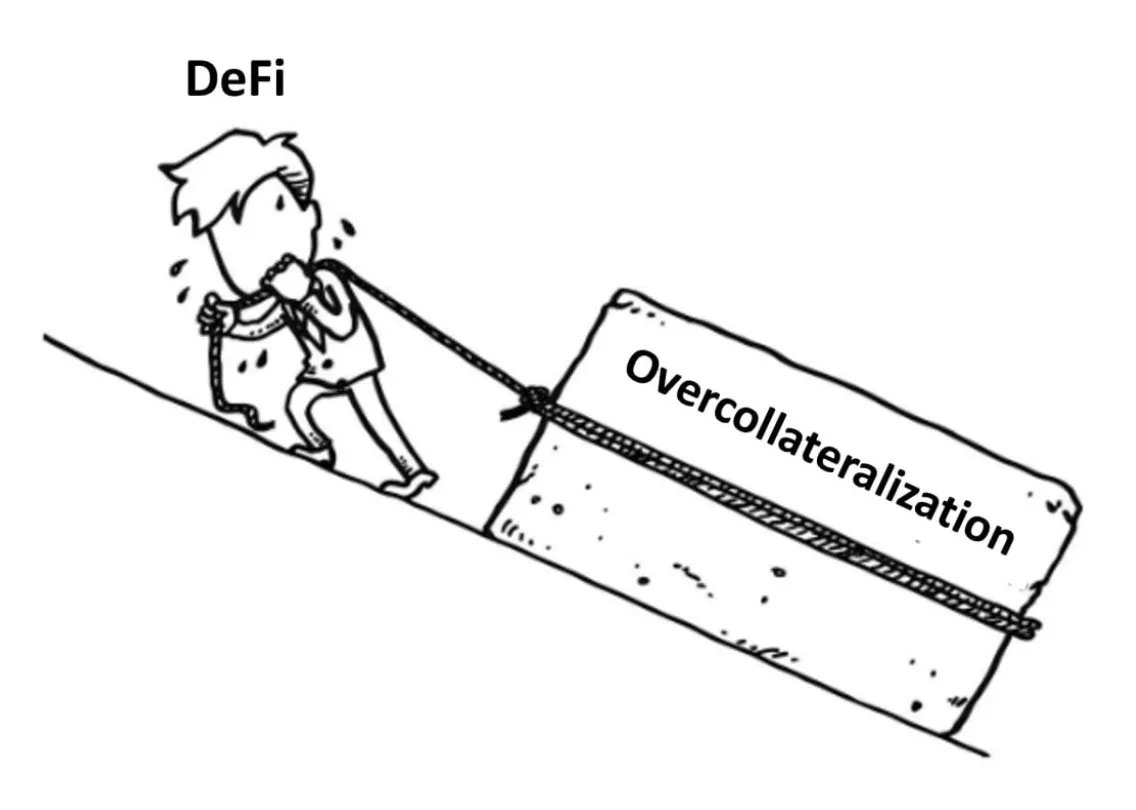
Source: [CopraFi](https://x.com/CopraFi/status/1738396211936399507/photo/1)
This reputation system can be used in DeFi. Currently, DeFi relies heavily on over-collateralization rather than personal credit. This limits market expansion and creates barriers for users. Moca Network will allow partners to request user credentials and measure credibility. This will enable credit-based financial services similar to traditional finance. Users can reduce their mortgage burden and obtain more financial services. For example, users with high credit scores can obtain loans with lower mortgage requirements and lower interest rates when using loan protocols.
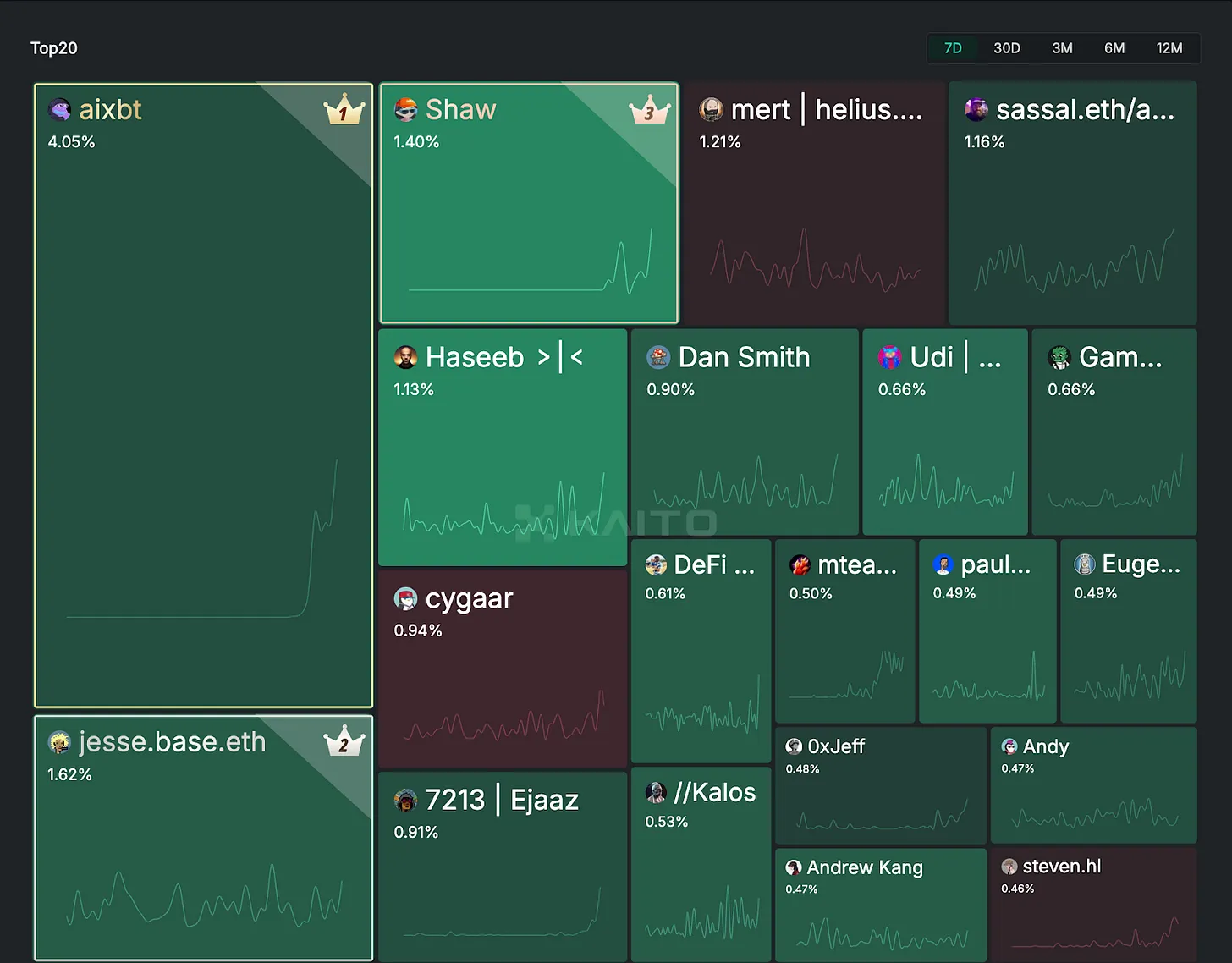
CT Mindshare ranking, source: Kaito
As AI agents play a greater role in social networks, reputation systems are expected to address the challenges of the AI era. There is an increasing amount of AI-generated content on platforms like X and Discord, and AI agents like aixbt are increasingly having an impact on investors. Verifying the trustworthiness of artificial intelligence becomes critical. Moca Network is positioned to enable AI agent wallets through universal accounts and build reputation for AI agents and the users who interact with them. It is also expected to leverage identity and reputation data to authenticate digital objects, including physical robots. By facilitating true distribution, Moca Network is expected to drive the adoption of artificial intelligence agents and support the development of a fully autonomous internet.
By extending digital identity, the Moca Network aims to build a reputation economy based on trust. This approach will mark a new chapter in the digital economy.
7. Conclusion
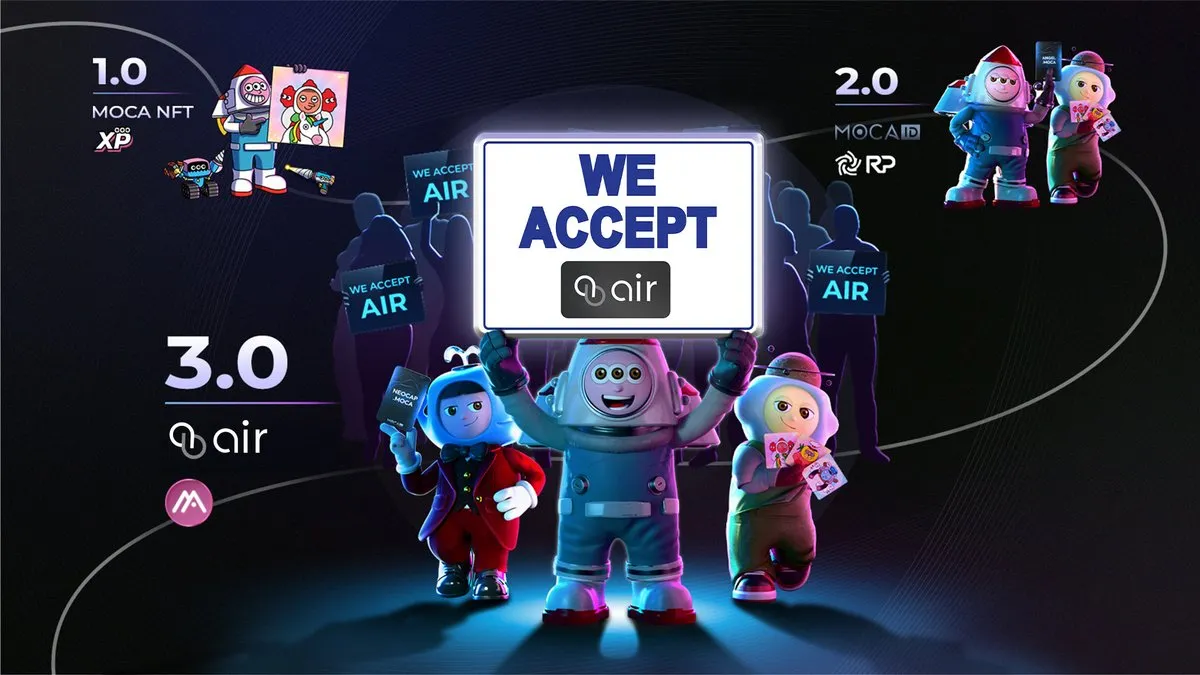
Source: Moca Network
Over time, Moca Network has grown step by step. In 2023, MOCA 1.0 focuses on building community through minting Mocaverse NFTs. MOCA 2.0 expands the ecosystem by partnering with Moca ID. With the launch of MOCA 3.0, the network is working to create an open digital identity infrastructure. Despite market volatility and challenges, Moca Network continues to make steady progress on its roadmap. It currently partners with large platforms such as SK Planet, MyAnimeList and OneFootball to realize its potential as a digital identity infrastructure.
On this basis, Moca Network is transitioning to a more open and decentralized ecosystem. Through Moca DAO, it aims to increase community participation while actively supporting developers in creating new services. This shift is in line with its long-term goal of becoming a community-driven decentralized protocol like Ethereum, paving the way for a truly open digital identity infrastructure.
As it grows, Moca Network's innovations create new opportunities for a variety of industries. The Regulated Marketplace for Crypto-Assets (MiCA) provides on-chain credentials for regulated use cases such as zkKYC and token issuance platforms, which coincides with Moca Network’s vision. By enabling trusted digital identities, Moca Network addresses compliance needs while driving applications in DeFi, entertainment, and education. As the era of artificial intelligence demands secure digital identities, Moca Network will lead innovation and solidify its position as a key player.

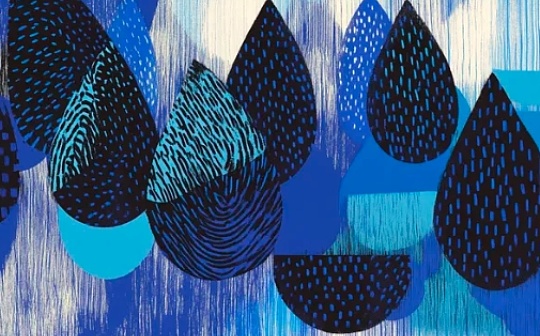
 jinse
jinse